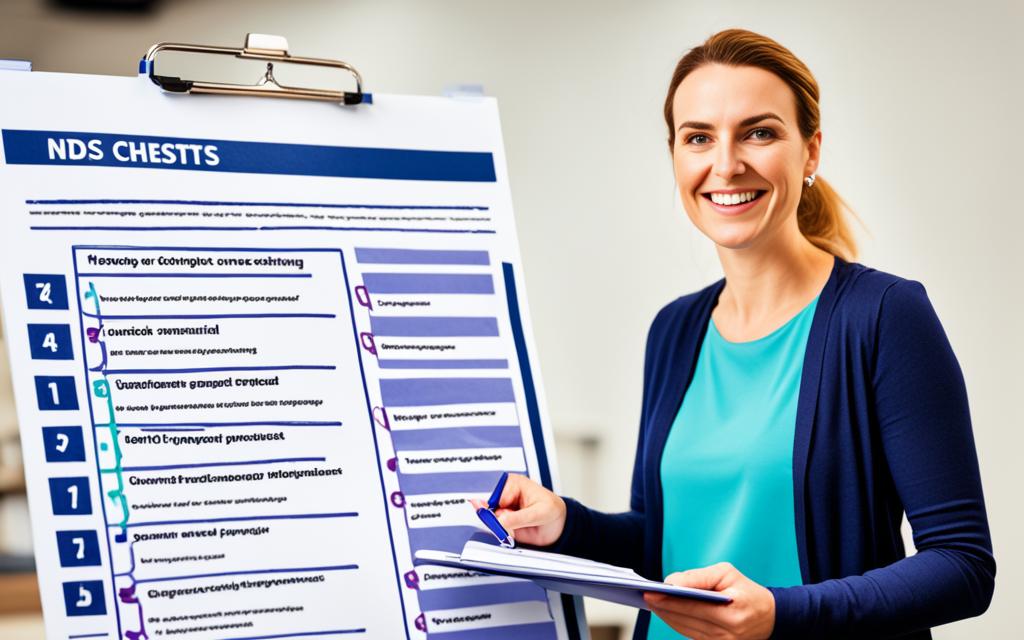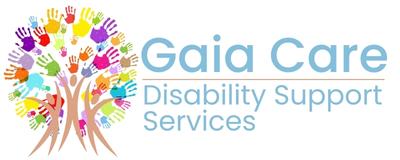In Australia’s red soil and vibrant culture, an alarming statistic stands out. Aboriginal and Torres Strait Islander folks in Queensland show much higher disability rates compared to non-Indigenous folks. This fact calls for urgent action, shining a light on the health and support gaps within communities. The roll-out of the National Disability Insurance Scheme (NDIS) in Queensland addresses this, ensuring clear NDIS planning guidance. Understanding the NDIS planning process, especially for Queensland’s Indigenous peoples, is crucial. It’s a step towards making everyone feel included and empowered.
Studies suggest that as many as 15,000 Aboriginal and Torres Strait Islander residents could be eligible for NDIS Queensland. But, finding a way to these services is complex. The challenge spans from the coast to remote communities. The NDIS aims to overcome these hurdles, making sure everyone gets the help they need. This initiative is set to create thousands of jobs and help many people with disabilities. It’s paving the way for a more inclusive future in Queensland.
Key Takeaways
- Understanding the disparities in disability rates and NDIS needs between Indigenous and non-Indigenous Queenslanders is critical.
- A strong NDIS planning process guide is vital for ensuring that people with disabilities in Queensland have a clear path to accessing services.
- With the NDIS’s commitment to reaching remote areas, supplementary payments and supports are a focus for equitable service provision.
- An array of support budgets and NDIS plan management options offer flexibility and personalised care within the scheme.
- Preparation strategies for the NDIS planning meeting should include recognition of the cultural and community nuances of Aboriginal and Torres Strait Islander peoples.
- Collaboration with Queensland Aboriginal and Islander Health Council (QAIHC) and other community organisations is encouraged to enhance NDIS readiness and advocacy for Indigenous communities.
Understanding the NDIS Planning Process In Queensland
The NDIS planning process steps may seem big at first. But they start smoothly with the initial contact NDIS makes. They get in touch with potential participants or their carers. Knowing what happens next makes things easier. It helps a lot, especially if you are looking after kids with disabilities in Queensland.
Foster and kinship carers are very important for kids who need extra help. Little ones under 6 get help through a special method called NDIS Early Childhood Early Intervention (ECEI). They don’t need a full NDIS plan. But kids older than 6 do need an ‘NDIS plan’ made just for them.
Initial Contact by NDIS Representative
Your NDIS journey starts when you or a rep gets in touch. They make sure everything fits well with what the child needs. It depends if the child is very young or older than six. This way, they match you with the best NDIS partner to help you out.
Choosing the Right NDIS Partner
Picking the right NDIS partner is super important. It could be an early childhood partner, a local area coordinator (LAC), or an NDIS planner. They explain everything about planning. This helps you get ready for a meeting. That meeting is key to making a great plan for the child.
Preparing for Your Planning Meeting
Getting ready is key to a great planning NDIS meeting. You talk about how the child’s life is affected by their disability. It’s good to note down everything important. Think about the child’s goals and what help they need. The NDIS plan is checked and updated often to make sure it works well.
In Queensland, around half a million people with disabilities will benefit from the NDIS in five years. Many are already seeing how great it is. This includes people getting help for the first time.
Knowing about these steps and getting ready for the meeting matters a lot. It helps you start the process. You can then get support that fits what you want. It’s all about improving life, well-being, and being part of the community.
Personalising Your NDIS Plan
To create a tailor-made NDIS plan, it’s crucial to identify your dreams and the supports you need. A plan made just for you opens doors to better life experiences and chances. The journey is different for everyone, so the plan reflects your unique needs, taking the first step to personalisation.
Defining Your Goals and Aspirations
Starting with defining NDIS goals is key. These goals are like milestones, showing how far you’ve come. They cover important life areas such as education, jobs, and health. Understanding what makes you tick helps set goals that are all about you.

Identifying Current Supports and Required Assistance
Knowing your NDIS current supports is also important. This includes help from family, medical care, and community groups. Spotting what’s missing lets you find the extra help you need. Putting all this together is what makes your NDIS plan truly your own.
Bright Plan Management stands out for managing plans well. They process bills really fast, in just a day or two. Plus, they work in places like Victoria and New South Wales. They’re known for being right on the ball, from handling invoices to keeping your paperwork safe.
Their live app makes tracking your NDIS plan a breeze. You get easy access to your finances and service providers through it. On top of that, they send you updates on how you’re spending your budget. These great services are part of what’s called Improved Life Choices, showing how plan management has gotten even better.
People say that teams like Bright Plan Management and MyIntegra really help make the NDIS work for them. Their praise comes from helping over 35,000 people get the support they need. Their success shows how a focused, personal approach changes the game for NDIS users.
Effective Preparation Strategies for Your NDIS Planning Meeting
Research shows success in an NDIS planning meeting heavily relies on good preparation. Many first-timers at an NDIS Planning Meeting stress the need to prepare well. This greatly affects their meeting results. Before going, it’s wise to look over the NDIS Planning Booklets available online. They help you get familiar with the NDIS planning process requirements and how to prepare.
- An amazing 87% of participants have clear goals for their NDIS Plan. This shows setting goals is key in planning.
- Getting advice from various therapists is recommended, with three being the average number suggested by planners. This helps clearly communicate your support needs.
- About 38% choose Self-Managed, 32% pick Agency Managed, and 30% go for Plan Managed NDIS Plans. A lot of people mix these options to fit their preferences and lifestyle needs.
Good NDIS planning meeting strategy follows steps similar to the annual NDIS Plan Review. It’s key to gather all your documents early on. This makes planning smoother. Knowing NDIS terms and thinking about your future needs helps you make a flexible plan.
Getting ready for your NDIS Planning Meeting not only helps start the conversation but also makes sure you fight for the right support. This includes for now and for what might come.
Planning ahead means asking for advice from disability groups and talking to service providers before your plan review. Show your NDIS plan to providers to get better support ideas. Participants can ask for an earlier review if big life changes happen.
In sum, smart NDIS planning and taking the initiative work together to bring good results. Whether you end up with a plan you manage yourself, one you share with an agency, or a bit of both – how you prepare matters. It leads to a richer and more tailored NDIS journey.
Creating a Comprehensive NDIS Planning Checklist
As you start the NDIS planning process, making a detailed checklist is key. You need to gather all important documents to clearly share your needs and goals. This preparation lets you enter the NDIS planning meeting ready, matching your needs with the supports the National Disability Insurance Agency can offer.
Essentials to Bring to Your Planning Meeting
- NDIS planning booklet – Your guide to goals and required supports
- Carer statement, if you have one, to share your support system’s view
- Proof of identity and residency to show you’re eligible
- Bank details for plans that involve managing your own funds
- Login details for myGov to help with online stuff
- Reports from health professionals about your support needs
- A support person to help and speak up for you during the meeting
Getting these NDIS planning meeting essentials ready is the first step. Then, think about the main topics for your meeting discussion. This leads to a plan that’s just right for you.
Key Topics to Cover During the Discussion
- What your daily life looks like and what troubles you might face
- Your goals for the near future and further ahead
- A good look at your situation to see if your plan needs changing
- Choosing how your plan is managed – by yourself or the NDIA
- Finding out about funding for the care and supports you need
Discussing these key NDIS discussion topics well can really help make your NDIS plan work for you.

In Australia, folks with disabilities have the right to proper supports from the NDIS, run by the NDIA. To begin with the NDIS or to ask for a plan review, reach out to the NDIA. You can go to a local office or call 1800 800 110. It’s important to know how long you have for reviews. You can also get help from places like Legal Aid Queensland.
Every participant has the right to receive the supports necessary to live a more independent life, choose how these supports are administered, and include a trusted person in their dealings with the NDIA.
To wrap up, preparing well for your NDIS planning meeting with a good NDIS planning process checklist helps make sure your plan meets your needs. This steps you closer to a life of higher quality and independence.
The Role of Support Services During the NDIS Planning Stage
Understanding the NDIS planning process timeline is key for those needing personalized disability support. Support services are crucial in the NDIS. They help participants understand each step. They have helped over 314,000 Australians since the NDIS started full scheme operations.
With so many people involved, it’s clear that NDIS planning support is vital. But there are issues. These include unclear communication, long waits, and problems dealing with NDIS agencies. It’s why engaging with support services early on is important.
Where services are rare and waiting lists are long, support services advocate for individuals. They push for essential services in NDIS plans. This is crucial, especially as these services also deal with staff shortages in rural areas.
The health and social assistance sector is growing quickly. It’s key in tackling NDIS planning issues and service shortages.
- The NDIS is a huge change, aiming to help over 500,000 people under 65 with significant disabilities.
- By late 2019, all Australian areas except Western Australia were part of the NDIS. Queensland had 55,577 people benefitting.
- The NDIS budget for 2020-21 was $20.9 billion. This shows how important good financial planning is.
Issues like service shortages highlight the need for support services to provide a safety net. The NDIS focuses on giving participants more choice and independence. Support services play a big role in this.
Support services fight for what participants need. They help identify goals and get the necessary support. This makes sure the NDIS planning support meets each person’s unique needs.
As we learn more about individuals with disabilities, support services must grow. Their role is foundational to the NDIS’s success.
Maximising Success Post-NDIS Plan Approval
The journey doesn’t stop when a person with disabilities gets their NDIS plan. It’s vital for Queenslanders to review their post-NDIS plan approval regularly. This makes sure their NDIS plans keep up with their changing needs. Now, many new NDIS users haven’t had government support before. This shows how important it is to keep checking and updating their plans.
NDIS participation rates in Queensland are quite low, especially for first-timers. They really need help to understand how everything works. Some might find it tough to pay for necessary assessments, which can be very costly. To help out, the Department is working to make NDIS more accessible, especially in rural areas.
Getting the most out of an NDIS plan review can be hard without the right help. This is especially true for people with cognitive or psychosocial disabilities. Having ongoing support and access to resources from the NDIS Quality and Safeguards Commission is essential. These steps help people fully benefit from their NDIS plans. They also strengthen the effort to make sure every eligible Queenslander can use the NDIS to its full extent, leading to a more inclusive society.
FAQ
Q: What is the NDIS planning process guide for Queensland?
A: The guide helps people with disabilities in Queensland get ready for their NDIS plan. First, you’ll talk with an NDIS rep to start making your plan. This plan will fit your needs and help you reach your goals. It covers how to have a successful planning meeting and get the right support.
Q: How does initial contact by an NDIS representative work?
A: An NDIS rep will get in touch to set up a planning meeting. This person could be an early childhood partner, a local coordinator, or an NDIA planner. They help you understand the planning steps and prepare for the meeting.
Q: How do I choose the right NDIS partner?
A: Picking the right NDIS partner depends on your age and needs. Look for someone who knows about the NDIS, listens to you, and understands your goals.
Q: What should I do to prepare for my NDIS planning meeting?
A: Get ready for your meeting by going through the NDIS planning booklet. Think about your daily life, what support you have, and what more you need. Be clear about your future goals and maybe bring any documents or a support person to the meeting.
Q: How do I personalise my NDIS plan?
A: Start by setting clear goals for your plan. Know what supports you already have and what extra help you need. This makes your plan right for you, aiming to improve your life.
Q: How do I ensure my planning meeting is effective?
A: Make your planning meeting work by listing your challenges, solutions, and what you hope to achieve. Be specific about your daily life, safety, community activities, and managing your day.
Q: What should my NDIS planning checklist include?
A: Your checklist should have your planning booklet, carer statement, ID, bank details for self-managing, your myGov details, health professional documents, and notes on your goals. Also, know what topics you want to talk about at the meeting.
Q: What topics should I cover during the planning meeting discussion?
A: In your meeting, talk about your daily life, safety concerns, and set clear goals. Discuss how you want to manage your plan, your support network, and any life changes affecting your support needs.
Q: What role do support services play during the NDIS planning stage?
A: Support services are very important during the planning stage. They give you information, guidance, and help to get ready for your meeting. They also support you in managing your plan after the meeting.
Q: How can I maximise success post-NDIS plan approval?
A: After your plan is approved, keep reviewing its success and stay in touch with your support network. Adjust your plan if your life changes. Use resources from the NDIS Quality and Safeguards Commission for the best support.
Source Links
- QAIHC National Disability Insurance Scheme Document
- Down Syndrome Queensland Resources – NDIS
- Queensland Government – NDIS Planning for Children in Care
- Future NDIS Secured for Queenslanders
- BrightPlan
- My Plan Manager
- NDSP Blog – Top 10 Helpful Tips for Preparing for Your NDIS Plan Review
- Endeavour – Everything You Need Ready for NDIS Plan Review
- Legal Aid Queensland – National Disability Insurance Scheme
- Parliament of Australia – National Disability Insurance Scheme Planning Interim Report
- Parliament of Australia – QPC NDIS Market Submission by Public Advocate

